Gardening is a pleasant activity but it can be difficult when critters eat your produce and destroy your plants – apparently, they love fresh food too. If they are a problem in your garden, then here’s a project that will keep them out of your plants for you – the raised and enclosed garden bed project!
Gardening is undoubtedly a delightful and fulfilling activity, letting you connect with nature and savour the rewards of cultivating your own fresh produce. However, this harmonious relationship with your garden can sometimes be marred by the unwelcome presence of critters who share an affinity for your fruits and vegetables.
As it turns out, these furry or feathered visitors have quite the appetite for the same fresh and delectable food you’ve been nurturing with care. The joy of growing your own produce can quickly turn into a battle to protect your plants from being nibbled, trampled, or dug up.
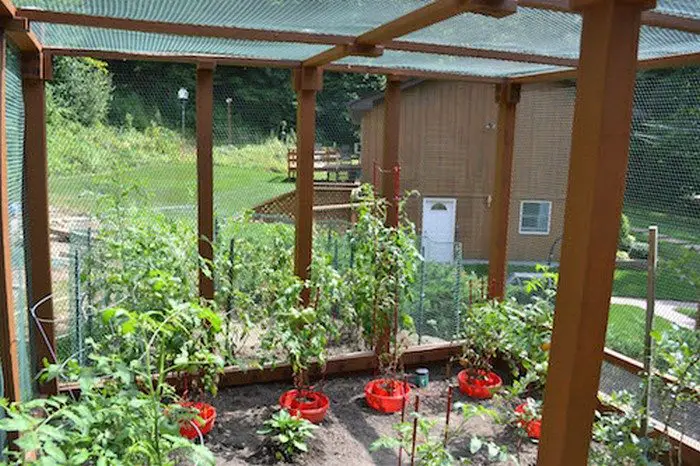
By building a fully enclosed garden bed, critters such as squirrels, rats, possums and any other animal that trespasses your garden won’t be able to get to your produce anymore. You can also choose to build an enclosure without the roof if your only problem is your naughty dog. ;)
This raised and enclosed garden bed project also includes the raised garden bed concept which makes tending to plants easier.
That’s two gardening concerns addressed in one project! Clever isn’t it?
Do you or know anyone who needs to have a raised and enclosed garden bed?
Contents
- 1 How to Make Your Own Raised and Enclosed Garden Bed
- 2 Plant Selection for Raised and Enclosed Garden Beds
- 3 FAQ for Raised and Enclosed Garden Bed
- 3.1 What are the benefits of a raised and enclosed garden bed?
- 3.2 How do I choose the right location for my raised and enclosed garden bed?
- 3.3 What materials are best for building a raised and enclosed garden bed?
- 3.4 Can I grow vegetables, fruits, and flowers in a raised, enclosed garden bed?
- 3.5 How do I maintain soil health in my raised and enclosed garden bed?
- 3.6 What are some common pests in raised and enclosed garden beds, and how can I control them?
- 3.7 How much watering does a raised and enclosed garden bed require?
- 3.8 Can I build a raised and enclosed garden bed on a patio or deck?
- 4 Summary
How to Make Your Own Raised and Enclosed Garden Bed
Ready to bid farewell to all of your gardening woes? Try this DIY raised and enclosed gardening bed to keep all those unwanted guests at bay. Whether you’re a seasoned green thumb or just beginning your horticultural journey, this step-by-step tutorial on how to make a raised and enclosed garden bed will empower you to craft a thriving, self-contained oasis of beauty and productivity right in your backyard.
Unveil the secrets to creating a raised and enclosed garden bed that not only elevates your gardening game but also adds a touch of innovation to your outdoor space.
Gather the essential materials and tools to get started.
Materials
- 2”x4” Timber
- 2”x3” Timber
- 8’x2”x10” Boards
- 67”x4”x4” Timber Posts
- 3” Deck Screws
- 2-1/2” Deck Screws
- Plastic Mesh
- Door Hinges
- Door Latch
Tools
- Measuring Tape
- Drill
- Driver
- Hand Staple Gun
- Compound Miter Saw
- Speed Square
- Level
- Utility Knife
Click on any image to start lightbox display. Use your Esc key to close the lightbox. 8-)
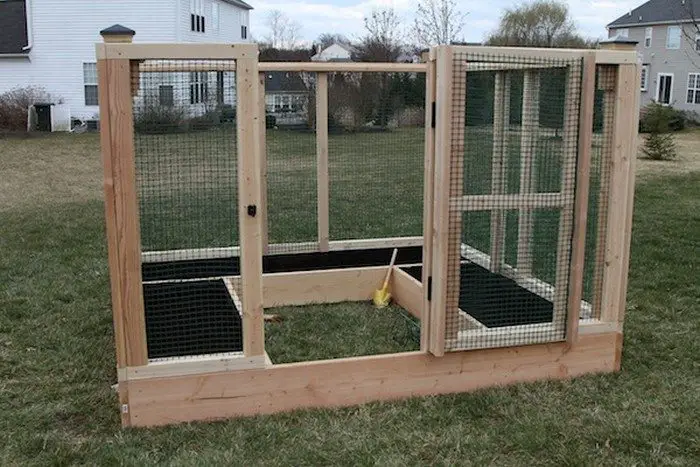
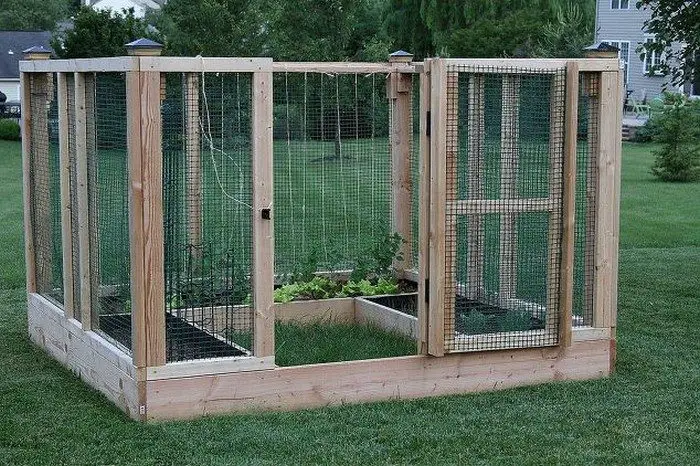

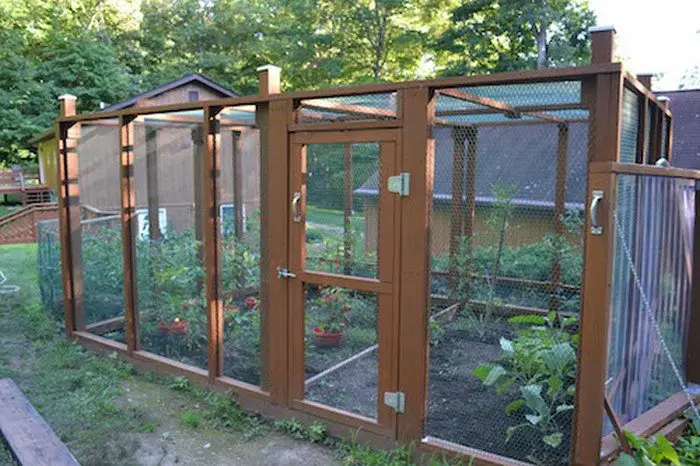

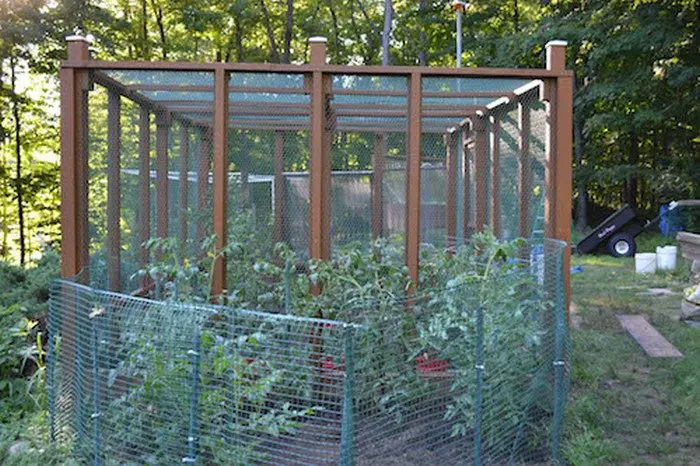
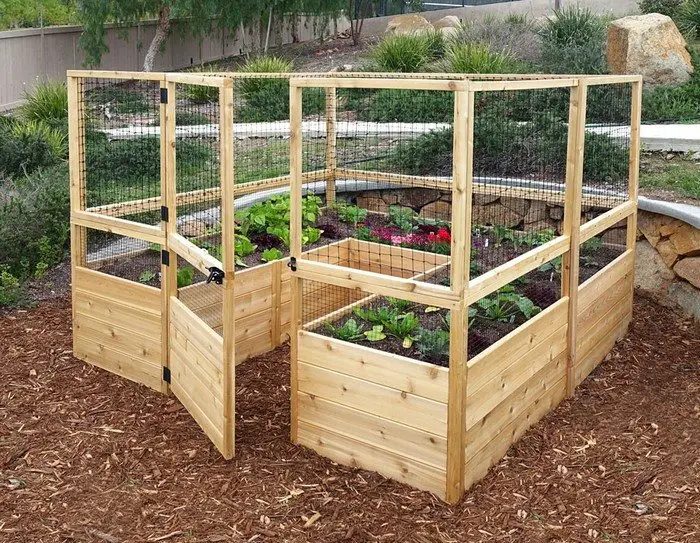
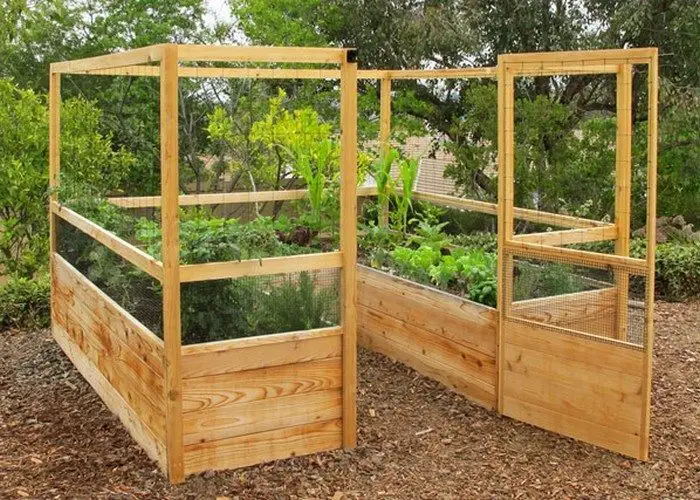
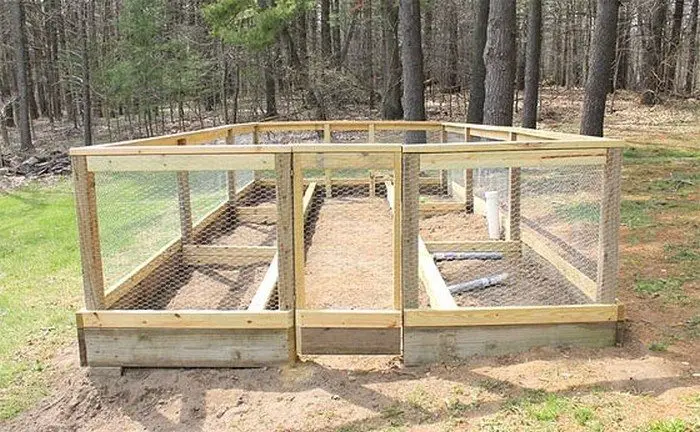
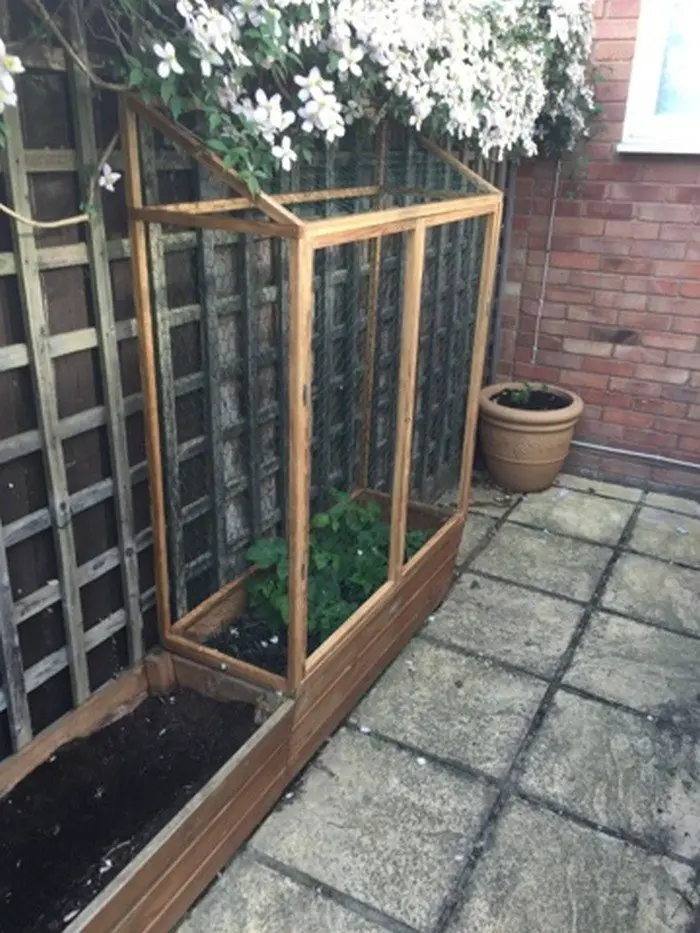
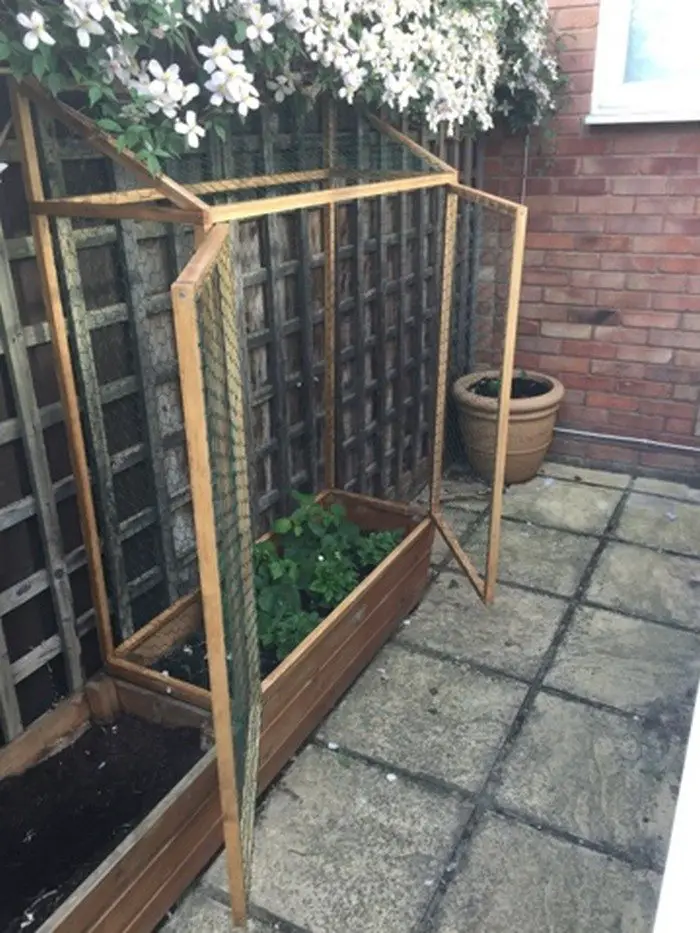

Steps
Step 1: Planning and Measurement
- Decide on the dimensions of your garden bed and mark the area where you want to build it.
- Measure and mark the locations for the corner posts. Ensure they are level and square.
Step 2: Cutting the Timber
- Using a compound mitre saw, cut the 2”x4” and 2”x3” timber to the desired lengths for your bed frame.
- Cut the 8’x2”x10” boards to create the raised bed’s walls.
Step 3: Assembling the Frame
- Build a rectangular frame using the 2”x4” timber pieces for the longer sides and the 2”x3” timber for the shorter sides.
- Secure the corners with 3” deck screws to create the raised bed base.
Step 4: Installing the Posts
- Attach the 67”x4”x4” timber posts to each corner of the frame using 3” deck screws. Make sure they are firmly anchored.
Step 5: Adding the Wall Boards
- Attach the 8’x2”x10” boards to the frame vertically to create the walls. Use 2-1/2” deck screws to secure them in place.
- Continue adding boards until you have enclosed the entire garden bed.
Step 6: Preparing the Door
- Measure and cut a section of the wall to create a door frame.
- Attach door hinges to the frame and the cut section of the wall to create a hinged door.
- Install a door latch to keep the door securely closed.
Step 7: Adding the Plastic Mesh
- Staple the plastic mesh to the inside of the garden bed walls to enclose the top. This will prevent critters from entering.
Step 8: Leveling and Checking
- Use a level to ensure the bed is evenly balanced and all corners are at the same height.
- Double-check the sturdiness of the frame and the door.
Step 9: Filling the Bed
- Fill the raised garden bed with soil and compost, leaving enough space for your plants to grow.
Step 10: Planting
- Plant your desired vegetables or herbs in the bed.
Step 11: Maintenance
- Regularly water and maintain your garden as needed.
Your raised and enclosed garden bed is now ready to protect your plants from critters and provide a controlled environment for your gardening endeavours. You can then enjoy the bountiful harvest and experience pest-free gardening!
Special thanks to Clover and Thyme for sharing invaluable ideas on how to make the raised and enclosed garden bed.
Plant Selection for Raised and Enclosed Garden Beds
Choosing the right plants for your raised and enclosed garden bed is crucial. This setup provides a unique environment for your plants. You need to consider factors like sunlight exposure, soil quality, and space constraints. Here, we’ll explore ideal plant choices for your raised and enclosed garden bed, ensuring a thriving and productive garden.
Ideal Vegetables
Raised and enclosed garden beds offer an excellent environment for growing a diverse range of vegetables. They provide ideal soil conditions, protection, and a controlled environment leading to healthier plants and better yields. Let’s delve into some ideal vegetable choices for your garden bed.
Tomatoes: A Top Choice
Tomatoes are a favorite for raised and enclosed garden beds. They thrive in the well-drained, nutrient-rich soil these beds provide. With the added protection from pests, tomatoes can grow healthier and produce more fruit. Stake or cage them for support as they grow tall and heavy with fruit.
Peppers: Color and Flavor
Peppers, both sweet and hot varieties, are great for raised beds. They love the warm soil environment and are less prone to soil-borne diseases in raised beds. The enclosure protects peppers from wind and pests, allowing them to flourish.
Leafy Greens: Spinach and Lettuce
Spinach and lettuce grow exceptionally well in raised and enclosed garden beds. They prefer cooler temperatures, so the raised bed allows for better control of soil warmth. The enclosure also protects these tender greens from pests like rabbits and deer.
Root Vegetables: Carrots and Radishes
Carrots and radishes are ideal for raised beds’ deep, loose soil. They need space to expand and grow, readily available in a raised bed environment. The enclosure helps in keeping away burrowing animals that might disturb these root vegetables.
Additional Vegetable Options
- Cucumbers: Thrive in the warm soil of raised beds and can be trained to climb up trellises, saving space.
- Zucchini and Squash: These vegetables Love the nutrient-rich environment of raised beds and benefit from the protection against soil-borne diseases.
- Onions and Garlic: These root vegetables benefit from the excellent drainage of raised beds and have fewer issues with pests.
Herbs Galore
Incorporating herbs into your raised and enclosed garden bed can transform your gardening experience. Herbs are culinary delights and add a sensory pleasure to your garden with their fragrant aromas. Explore some popular herbs that thrive in raised and enclosed garden beds.
Basil: A Must-Have Herb
Basil is a versatile and widely loved herb, perfect for raised garden beds. It prefers warm conditions and well-drained soil, making it a great fit. Basil is protected from harsh elements in an enclosed bed, allowing for lush growth. Use it in sauces, salads, and as a fresh garnish.
Cilantro: For a Fresh Zest
Cilantro, with its unique flavor profile, is another excellent choice. It grows quickly in the cooler temperatures of spring and fall. The controlled environment of a raised and enclosed bed helps manage its growth and prolong its harvest period.
Thyme: A Hardy Perennial
Thyme is a hardy, low-maintenance herb ideal for raised beds. It requires less water and thrives in well-drained soil. Its small, fragrant leaves are a staple in many dishes, and its perennial nature means it will provide flavor year after year.
Parsley: More Than a Garnish
Both curly and flat-leaf varieties Parsley is more than just a garnish. It’s a biennial plant that prefers the controlled soil conditions of raised beds. Parsley is rich in vitamins and adds a fresh, clean flavor to dishes.
Expanding the Herb Garden
- Mint: Known for its invigorating scent, mint is a vigorous grower that benefits from the containment of a raised bed.
- Chives: Easy to grow and maintain, chives add a mild onion flavor to dishes and have lovely purple flowers.
- Oregano: This robust herb thrives in well-drained soil, ideal for raised beds. It’s perfect for Italian and Greek dishes.
Herbs in raised and enclosed garden beds provide fresh flavors for cooking and contribute to your garden’s overall aesthetics and aroma. They require less space and can be easily maintained, making them ideal for experienced and novice gardeners. With the right care, your herb garden will be a source of delight and flavor.
Fruitful Choices
Growing fruit in raised and enclosed garden beds can be a rewarding experience. The controlled conditions of these beds are ideal for nurturing fruit-bearing plants. Let’s look at some fruitful options well-suited for this type of gardening.
Strawberries: Sweet and Luscious
Strawberries are a popular choice for raised garden beds. They thrive in the well-drained, nutrient-rich soil that these beds provide. The enclosed environment protects strawberries from pests and keeps the fruit clean. Planting strawberries in raised beds also allows for easier harvesting. Ensure they get plenty of sunlight and regular water for a sweet and juicy yield.
Blueberries: Nutrient-Rich Delights
Blueberries require acidic soil, which is easier to manage in a raised bed. These nutrient-rich fruits benefit from the protection of an enclosure, especially from birds who love to feast on the berries. Ensure your blueberries get full sun and consistent moisture. You can enjoy a bountiful harvest of these antioxidant-rich fruits with proper care.
Additional Fruit Options
- Raspberries and Blackberries: These berries can be grown in raised beds, allowing for better control over their spreading habit. Trellising can help manage their growth and make harvesting easier.
- Dwarf Fruit Trees: Certain dwarf varieties of fruit trees, such as apple, pear, or cherry, can be grown in larger raised beds. They require more space but can produce a significant yield.
- Grapes: With proper support structures, grapes can thrive in raised beds. They benefit from excellent drainage and controlled soil quality.
Growing fruits in raised and enclosed garden beds requires attention to soil conditions, sunlight, and watering needs. With the right care, these beds can yield abundant fresh, home-grown fruits, adding beauty and flavor to your garden. The enclosure also provides an added layer of protection, ensuring that your fruits are safe from pests and wildlife.
Flower Power
Incorporating flowers into raised and enclosed garden beds is aesthetically pleasing and beneficial for your garden’s ecosystem. Flowers can attract beneficial insects, improve pollination for fruits and vegetables, and serve as natural pest deterrents. Let’s explore some ideal flower choices for raised garden beds.
Marigolds: The Natural Pest Deterrent
Marigolds are a popular choice for gardeners. They have a strong scent that naturally repels many garden pests. Planting marigolds around the edges of your raised bed can help protect your vegetables and herbs. They require minimal care and add a vibrant splash of yellow or orange to your garden.
Petunias: A Burst of Color
Petunias are another great addition. They come in a wide range of colors and can add a stunning visual appeal to your garden. Petunias are known for attracting pollinators like bees and butterflies, which benefit your garden’s health. They thrive in sunny conditions and well-drained soil, making them well-suited for raised beds.
Nasturtiums: Edible and Attractive
Nasturtiums add beauty to your garden with their bright flowers and are also edible. They can attract beneficial insects and are known to repel some pests. Nasturtiums are easy to grow and can be used as ground cover or trained to climb trees.
Other Flower Choices
- Lavender: Known for its soothing fragrance, lavender can also deter pests and attract pollinators.
- Sunflowers: These tall, cheerful flowers can be natural trellises for climbing plants like beans and peas.
- Calendula: Often used in herbal remedies, calendula can attract beneficial insects and add a splash of color.
By adding these flowers to your raised and enclosed garden beds, you not only enhance the beauty of your garden but also contribute to a healthier and more productive gardening environment. Flowers like marigolds, petunias, and nasturtiums are crucial in attracting beneficial insects, improving pollination, and naturally deterring pests. These flowers are valuable to any raised garden bed with their vibrant colors and varied benefits.
FAQ for Raised and Enclosed Garden Bed
What are the benefits of a raised and enclosed garden bed?
Raised and enclosed garden beds offer numerous benefits. They improve drainage, provide better soil quality, deter pests, and make gardening more accessible. This type of garden bed is ideal for controlling the growing environment.
How do I choose the right location for my raised and enclosed garden bed?
Choose a location that gets ample sunlight, preferably 6-8 hours a day. Ensure the area has good air circulation and is accessible for watering and maintenance. Avoid low-lying areas that may collect water.
What materials are best for building a raised and enclosed garden bed?
Durable materials like cedar, redwood, or composite are great choices. These materials are resistant to rot and pests. Consider using chicken wire, hardware cloth, or plastic mesh for the enclosure.
Can I grow vegetables, fruits, and flowers in a raised, enclosed garden bed?
Absolutely! Combining vegetables, fruits, and flowers can create a diverse and productive garden. Flowers can attract pollinators and beneficial insects, enhancing the health of your vegetables and fruits.
How do I maintain soil health in my raised and enclosed garden bed?
Regularly add compost and organic matter to maintain soil fertility. Ensure the soil is well-drained and avoid overwatering. Rotate crops each season to prevent soil-borne diseases.
What are some common pests in raised and enclosed garden beds, and how can I control them?
Common pests include aphids, slugs, and caterpillars. Control them by keeping the garden clean, using organic pest deterrents, and encouraging natural predators like ladybugs.
How much watering does a raised and enclosed garden bed require?
The watering needs depend on the plants and weather conditions. Generally, raised beds require more frequent watering than in-ground beds. Use a moisture meter or check the soil moisture regularly.
Can I build a raised and enclosed garden bed on a patio or deck?
You can build a raised and enclosed garden bed on a patio or deck. Ensure the structure is well-supported and consider using a liner to protect the surface.
Summary
Cultivate innovation in your gardening game. Whether battling critters or looking to elevate your green thumb skills, this step-by-step tutorial empowers you to create a protective oasis that combines functionality with innovation.
Imagine a garden where your prized plants are shielded from nibbling critters, and where the delicate balance between nature and cultivation is maintained. Here, innovation takes centre stage, as you harness the power of thoughtful design and construction of a raised and enclosed garden bed to create a space that’s not only functional but also aesthetically pleasing.
With your newfound knowledge and skills, you’ll not only overcome the challenges posed by garden invaders but also gain the satisfaction of nurturing your plants in an environment where innovation and functionality coexist harmoniously.
As you embark on this gardening journey, each step you take brings to the realization of your green thumb dreams and the creation of a protective haven that showcases your unique gardening vision.
Say goodbye to unwanted garden invaders and hello to a flourishing, pest-free paradise. Ready to start your journey where your gardening dreams can thrive?
Build your own raised and enclosed garden bed today and see your gardening aspirations turn into reality. Happy building!





